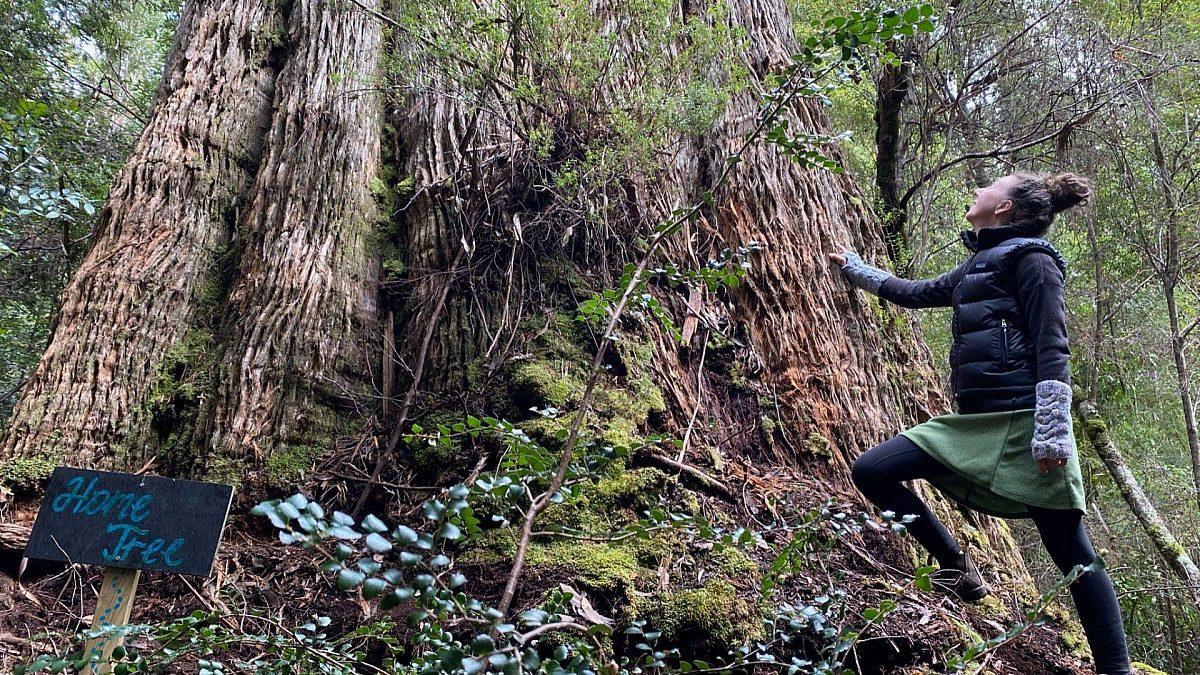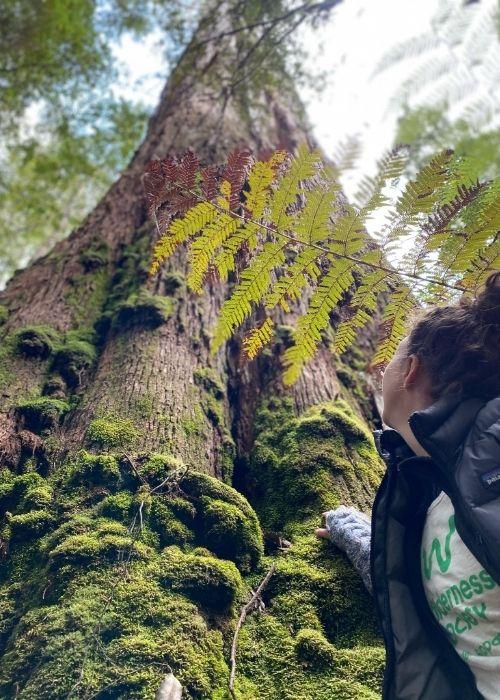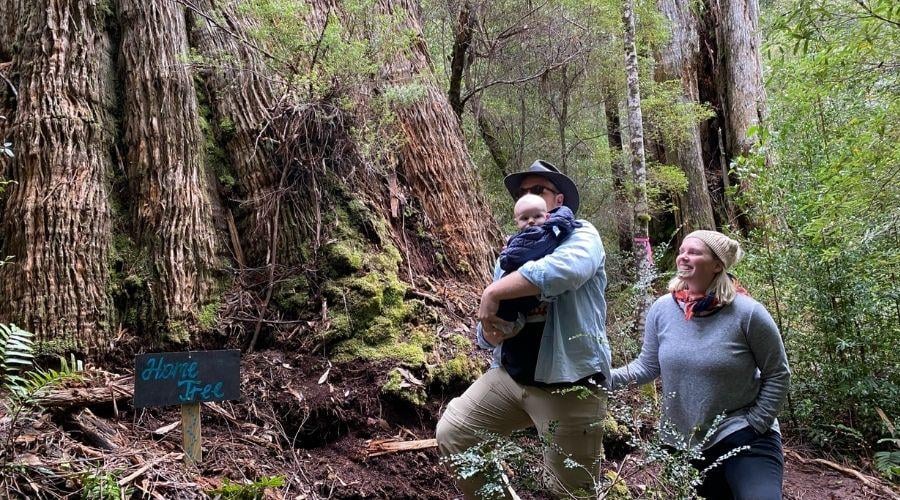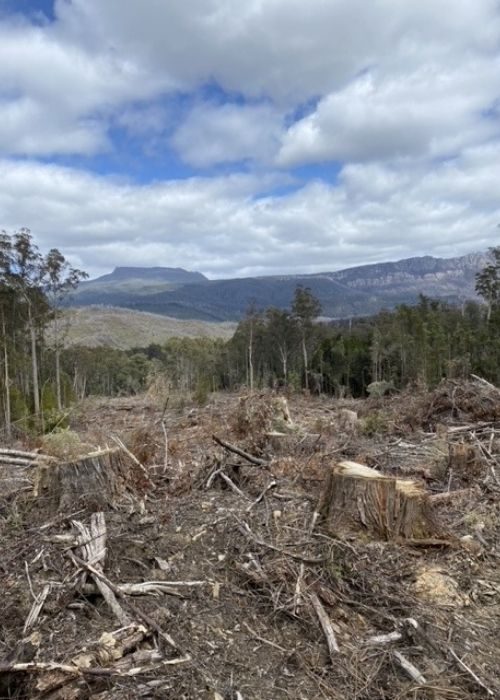
A walk to Home Tree
Lily Weinberg takes a walk deep into the ancient forests of the Florentine Valley, where she encounters some of Tasmania's famous giant trees; trees which sadly sit in a logging coupe due to be woodchipped this summer.

I can’t write about forests without writing about magic. They have always been a source of wonder. As a child, it was building fairy houses in tree stumps and imagining walking trees and talking animals. Now it is the awe of the fungus that facilitates the way trees communicate with each other or learning about how humans feel different walking in established forest versus urban areas, plantation or regrowth forest.
So when I had the opportunity in October to meet a 5.4 metre wide, 400-year-old stringy bark in Tasmania’s Florentine Valley, I took it. Recently named Home Tree, this old giant is one of six massive trees in logging coupe TN005D due to be logged this summer by Sustainable Timber Tasmania.
In collaboration with the Wilderness Society, Forestry Watch has made a short circuit through the forest so that locals can meet Home Tree. Stepping on to the trail is like stepping into a fairy land. The Earth absorbs your weight and then springs upwards again when you take a step. A hush fell over the group as we weaved our way across the trampoline-like floor.
In Peter Wohlleben’s book the Hidden Life of Trees, he writes: “This is because a tree can be only as strong as the forest that surrounds it.” In the old growth forest around Home Tree it feels strong and resilient. With seemingly infinite shades of green, moss covered ground, forest giants—the forest feels whole.

I watched people meeting Home Tree—some gave it a big hug, others crouched among its roots taking photos like it is a celebrity (and it should be!), but all of us stood gazing up trying to see to the top.

And yet, as we continued our walk, we emerged into an area that Sustainable Timber Tasmania has clear felled—most of which will be woodchipped. The next step is to burn the rest of what remains. But already the soil has lost its spongy-ness. The quiet hush of the forest is gone along with the vibrant colours and textures of life. People’s disbelief over Home Tree’s majesty turned to anguish: how anyone could chop all this down? Tears welled into people’s eyes. I turned back to look from the lush forest we’d just be surrounded by to this destruction.
To end extinction and protect against the climate crisis, we must allow trees to grow old. Peter Wohlleben goes on to say, “So, in the case of trees, being old doesn't mean being weak, bowed, and fragile. Quite the opposite, it means being full of energy and highly productive. This means elders are markedly more productive than young whippersnappers, and when it comes to climate change, they are important allies for human beings.”

Together, we can stop our allies from being woodchipped. You can join me and thousands of others in raising your hand to protect Tasmania’s high conservation value forests and Home Tree.